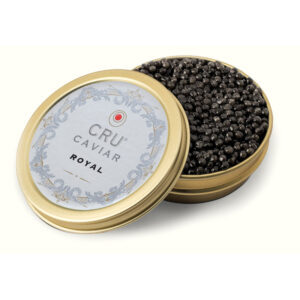With cannabis on the rise, it’s fair to say that the cannabis consumer landscape has shifted immensely. While there may still be that prevailing idea of the typical cannabis user lingering from the days of the ‘60s and ‘70s, demographic trends today tell a different story.
Headset, a cannabis data and analytics company, released a new comprehensive report, titled “A look at cannabis consumer demographics in 2023,” that sheds further light on today’s cannabis consumers, specifically looking at age, gender, and geography of cannabis sales in key markets ranging from the U.S. and Canada.
The report utilizes data from millions of individual transactions across eight U.S. states and two Canadian provinces. Data was collected using Headset’s proprietary market intelligence software, tracking point-of-sale transactions and providing insights into consumer behavior and preferences.
Gender-Based Consumer Insights
In both the U.S. and Canada, men made up the majority of cannabis consumers, at 66.2% and 62.5%, respectively, with women making up the remainder. The report notes that women have seen a slight increase in their percentage of total sales since January 2021, though that increase has been “relatively inconsistent” over the last 26 months.
Even though participation among women consumers has seen an overall increase, the results have not been consistent across individual markets. For example, over the last year in the U.S., the percentage of sales among women consumers increased by 4% in Nevada, while Oregon’s numbers dropped by 3.1%, according to the report.
Regarding specific category sales, women had the majority of sales for topicals only, accounting for 50.2% of total topical sales in the U.S.
Cannabis Consumers by Age
The report wastes no time deeming millennials as top-spending cannabis consumers, capturing “nearly half of every dollar” spent on cannabis in the U.S. and Canada. In Canada in particular, there is a higher concentration of spending within younger demographics, with millennial and Gen Z consumers accounting for 72.1% of all tracked sales; in the U.S., that same cohort contributed 63% of total sales. The report notes that this is “heavily influenced” by the legal age of consumption, which is 18 or 19 in Canada and 21 in the U.S.
Taking a closer look at the U.S., Colorado and Massachusetts had the highest percentage of sales in the 21-42 age range, with Nevada and Arizona boasting the highest percentage of sales for ages 43-77. In any case, younger consumers still dominate each market.
There is also a significant trend surrounding larger transaction sizes as a consumer’s age increases: The average basket size for Gen X and Baby Boomers is above $60, whereas the average basket size for millennial and Gen Z consumers remains below $55.
Category Preferences by Age Group
The report also notes the “clear category preferences” when it comes to age groups, specifically that older demographics generally buy a greater variety of products than millennials and members of Gen Z. Baby Boomers and Gen X tend to have more interest in “wellness”-related products, like capsules, topicals and tinctures. Baby Boomers wallet share for these types of products is more than five-and-a-half times more than Gen Z, capturing 5.1% and 0.9% in total sales, respectively.
Younger consumers also tend to gravitate toward inhalable products, like concentrates, flower, vape pens and pre-rolls, with Gen Z’s wallet share for these products coming in 25% higher than for Baby Boomers. Conversely, edibles don’t see an age correlation as dramatic as other categories, though they are less popular in Canada, as restrictions cap products at 10 mg per package.
Consumer Demographics, the Cannabis Market and Past Research
The report begins noting that having an understanding of cannabis consumer demographics is “crucial” for businesses operating in the industry.
Cy Scott, CEO and founder of Headset, echoed the sentiment, saying, “Those who plan for the future will succeed when it arrives,” in a news release.
“Our comprehensive demographics report not only provides data regarding the current state of the cannabis industry, but it will also help brands plan for the future and build a sustainable, thriving business,” Scott said. “From the consumer preferences of Generation Z to the rising female consumer base, there are several trends to examine. It will be interesting to reflect on this report in a year and examine what new trends emerge.”
While the industry is constantly shifting, the findings mirror other recent reports, namely those highlighting the broad use of cannabis among members of Generation Z. A 2022 Frontier Data report found that 68% of individuals aged 18-24 prefer cannabis over alcohol, additionally finding that 70% of millennials aged 25 to 34 also preferred cannabis.
In addition, a 2021 study conducted and compiled by the Brightfield Group looked at first-time cannabis consumers, finding that new cannabis use is higher in women and members of Gen Z than other groups.

